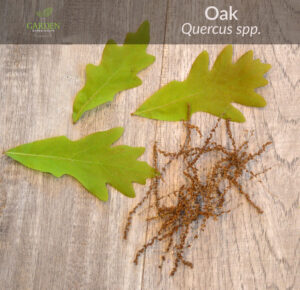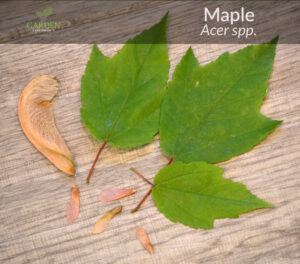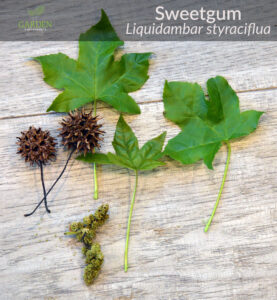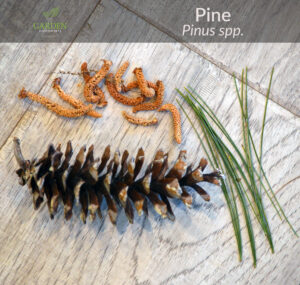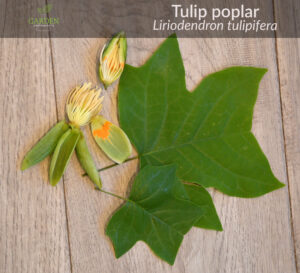It’s springtime! The sun is shining, the flowers are starting to bloom, and pollen is coating everything, including our cars. Even the trees are getting in on the action.
We have been finding all sort of tree seeds and tree reproductive parts laying on the ground around our neighborhood. From the brown stringy stuff to the tiny helicopters and funny little worm-shaped things, spring tree droppings are clogging the gutters of our streets.
 The Brown Stringy Things On the Ground: Oak Tree Catkins
The Brown Stringy Things On the Ground: Oak Tree Catkins
What is that brown stuff that falls from oaks trees in the spring? They are crumbly, fragile, messy, and everywhere! As soon as you touch one, tons of tiny grains fall off creating even more of a mess. If you track them in the house with your shoes, you’ll soon have grit covering your floors.
These stringy brown tassels are called catkins or tassels. They are the male pollen structures produced by oak trees (Quercus spp.). They hang in the trees like tassels on the end of bike handlebars, releasing their pollen into the wind to fertilize the female flowers. After all the pollen is gone, they float to the ground, creating great mats of the stuff.
We have a pair of large oak trees next to our driveway. Our cars are covered in the stringy brown stuff that falls from the oak trees. There is so much of it, that when we use a leaf blower on the driveway, it rolls up into big mats of tree debris.
So, what do you do with these oak tree droppings? The best thing to do is to rake up the oak catkins and put them in your compost pile or bin. By composting them, the nutrients will then return to the soil when you add the rich compost to your garden.
Helicopters or Whirlybirds: Maple Tree Seeds 
If you watch a maple samara falling from the tree, it spins, swirling to the ground as it falls; this is why many people call the seeds of maple trees names like helicopters or whirlybirds. A maple tree can drop hundreds of samaras in one spot.
The samara is made up of a wing made of papery tissue which is attached to a nutlet that encases one seed. A single maple tree (Acer spp.) can produce tons of them (hundreds or thousands) so you can find them all around the ground. Samaras range in size from very tiny to much larger, depending on the maple tree species.
If you ask me, maple tree helicopters look a little bit like a small fish with the fancy tail at the end.
I don’t recommend adding samaras to your compost pile or bin just in case you end up with lots of little maple trees growing in your future soil.
 Green Ball-Shaped Clumps: Sweetgum Flowers
Green Ball-Shaped Clumps: Sweetgum Flowers
I don’t really know how to describe these tree reproductive parts. They are like little green fuzzy balls attached to a stem. Whatever they look like, these are the male flowers of the Sweetgum tree (Liquidambar styraciflua).
Like oaks, sweetgums are wind-pollinated and have both male and female flowers. After the male flowers have released all of their pollen, they fall to the ground.
You will often find them laying side-by-side with their fruits – the spiky brown balls we call gum balls. These spiky fruits encase several tiny seeds which are fed upon by birds and small mammals. Sweetgum trees drop these spiky balls all over the ground.
As a child, we used these spiky balls as projectiles to hurl at one another while playing chase. Just don’t step on them in your bare feet. It really hurts!
 Brown Worm-Like Things Under a Pine Tree: Male Pine Tree Cones
Brown Worm-Like Things Under a Pine Tree: Male Pine Tree Cones
Believe it or not, the small worm-like brown things that you see laying on the ground underneath the pine trees (Pinus spp.) in the spring are male pine cones. These male cones aren’t the large brown hard woody pine cones you’re familiar with; those are the female cones.
These male cones of the pine tree release pollen into the air to pollinate the female flowers, producing seeds deep inside the woody cones.
After the male cones release all of their pollen, they fall to the ground in the hundreds. If you have a pine tree in your yard, both types of cones can make quite a mess.
 Green Petals with Orange Stripe: Tulip Poplar Flowers
Green Petals with Orange Stripe: Tulip Poplar Flowers
Although the tulip poplar tree (Liriodendron tulipifera) has pretty flowers, most people often don’t notice them as they are high above their heads. When the petals and stamens fall to the ground, you may wonder what they are.
The distinct petals of the tulip tree flower are green with a fluorescent orange stripe near the base. You may also find just the stamens and pistils which resemble a bunch of white matchsticks all bunched together.
The seeds of the tulip poplar tree are brown and thin with wings; these seeds are lance-shaped. You can see from this empty seed pod how many seeds each flower produces, so in the spring, these thing brown seeds cover the ground.
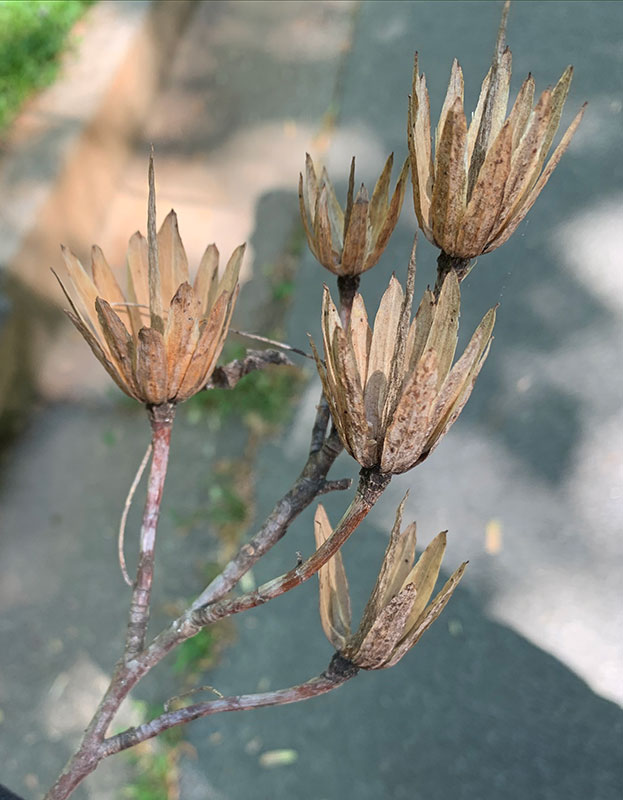
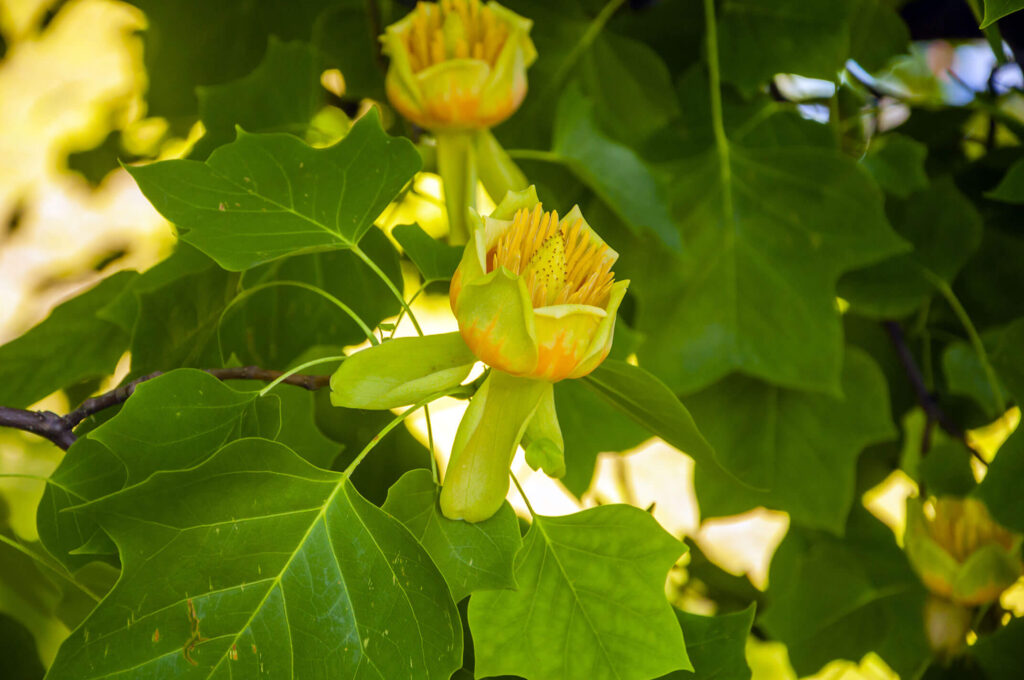
What to do with the tree droppings in the spring?
For most of the tree debris you find on the ground during the spring, you can rake it up or use a leaf blower to create a pile and scoop it into your compost pile or bin. Much of what the trees are droppings are reproductive parts and will decompose and add nutrients back into the soil.
However, in the case of maples or tulip trees, their samaras include a seed, so you should avoid adding it to your compost. It’s not likely you’ll end up with many maple seeds germinating into seedlings in your compost, but this way you’ll spare yourself the work of pulling them up if they do.

